Organisation uses NOWCA safety system to ensure bathers can dive into the crystal water confidently
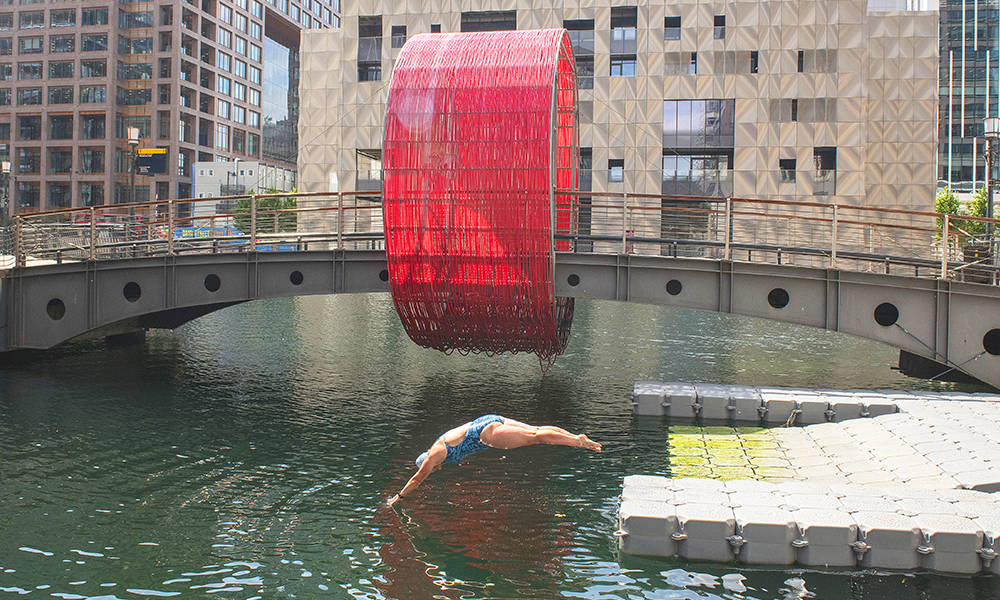
Subscribe to Wharf Life’s weekly newsletter here
Just as I arrived at Middle Dock in Canary Wharf to interview Chess Roffe Ridgard, she saved a life.
A smallish pigeon had fallen into the water and was having difficulty making it out. In seconds the bird was scooped up by Love Open Water’s head of development, brought to dry land and placed safely in the shade to dry off – the temperature was in the high 20s, after all.
Later, without so much as a thank you, it flew off to wherever pigeons make their homes in east London.
That little bedraggled animal owes its continued existence to Canary Wharf Group and Love Open Water – a welcome unintended consequence of their project.
The two organisations – working in partnership with the Canal And River Trust, which is responsible for managing the docks – have teamed up to deliver a programme of swimming over the summer.
While these aren’t the first watersports sessions to take place in the dock, this is the first sustained access offered to the general public with a full complement of life guards, a booking system and expert staff on hand to offer tips, advice and point out the best spots to watch fish sunbathing in the depths.
“I swam competitively as a pool swimmer in the Midlands when I was younger,” said Chess, who is heading up the initiative for Love Open Water.
“I’m a proud Mansfield girl and trained with Becky Adlington who was one of our golden girls in the 2012 Olympics.
“I’ll say it now, she was faster than me, but I wouldn’t have admitted it at the time.
“Then a kidney infection left me unable to train, so I found myself in the music industry.
“I used to work with a lot of famous DJs and bands, and I did that for a long time. Then I found open water swimming about five or six years ago and I’ve never looked back.
“It became so important to me to help other people, and for them to find a mental health boost from this sport.
“Having seen how it really brings joy to people’s lives made me want to become involved, so I quit my job in music and here I am.”
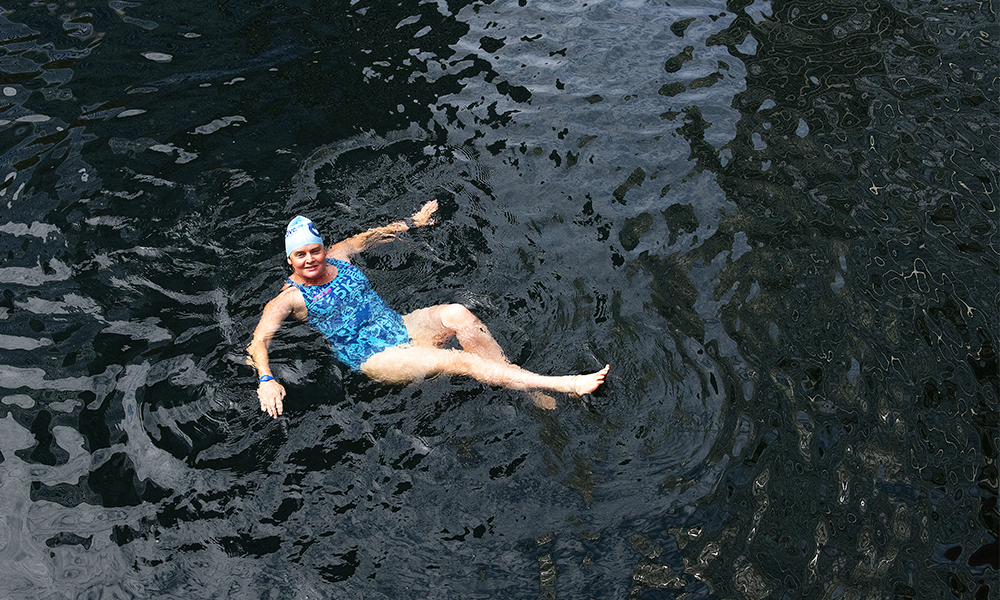
With cold, deep water – typically eight metres to the bottom – safety is Chess and her team’s top priority.
Having operated at numerous venues, including east London’s Royal Docks, Love Open Water uses the NOWCA safety system to keep track of exactly who’s in or out and to provide insurance for those swimming.
“Love Open Water was set up to simply create safe spaces for people to swim outdoors,” said Chess.
“The idea is that by using this system we can open more blue spaces to swimmers of all abilities and build community hubs around them so there’s a real social aspect to what we do.
“That’s in contrast to swimming pools, which are very controlled and quite clinical.
“Love Open Water is about getting that community feel, about going out and enjoying the outdoors and the water.
“At Canary Wharf the distances available vary depending on how many safety staff we have working because that’s the key to everything we do.
“We have either a 300m loop, a 500m loop or a 600m loop that goes right to the end of the dock underneath the DLR bridge.
“Before I came here I’d swum under a few aqueducts before, but never under a railway bridge with trains running on it.
“The staff at Canary Wharf Group have been absolutely phenomenal – they came up with the idea to activate the dock as part of the work they are doing to get more people in and on the water here.
“They were looking for people to help them to do that and, having put forward our ideas and shown them what we’ve been doing at our other sites, we were lucky enough to be chosen to work with them on this project.
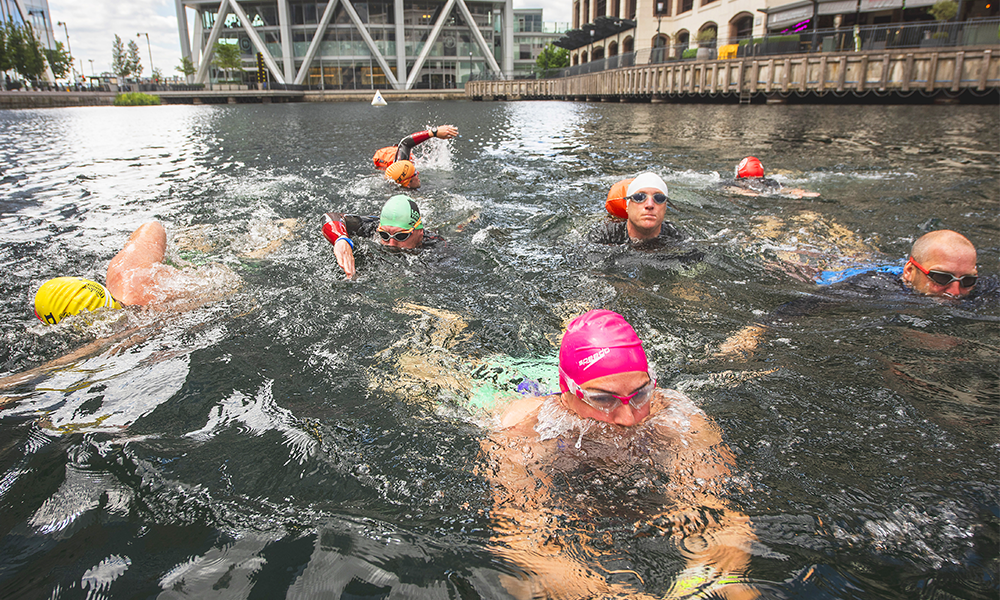
“We hope that this is just the start – we have this trial for the first few months but we’d love to make sure it’s a facility that’s accessible to as many people as possible – we have big plans.
“We’d love to operate at this venue all year round – a million percent yes.
“Cold water swimming is hugely beneficial for mental and physical health.
“We’ve run winter swimming at our London Royal Dock site for about 10 years, and we’ve seen the popularity of that go through the roof.
“During the pandemic we were only able to operate for a month and a half over the winter, but we saw our membership increase by 450% and swim attendance jump by 380%.
“Those are massive numbers and it shows just how important cold water exposure has become to people.
“It’s all been driven by programmes on the BBC – but we’re here to show people the safest ways to get in and out of the water and to help them understand about hypothermia and the risk of cardiac arrest.
“People need to know that jumping in and swimming off fast are two of the most dangerous things you can do regardless of the time of year or the temperature.
“When you’re immersed in cold water quickly everything tightens up and that puts additional pressure on your heart, so if you try and swim off quickly, you’re at a very high risk of cardiac arrest.
“Remember, don’t jump in, don’t swim off quickly and if you get into trouble, float to live, lie on your back, keep your head relaxed, focus on your breathing and call for help.”
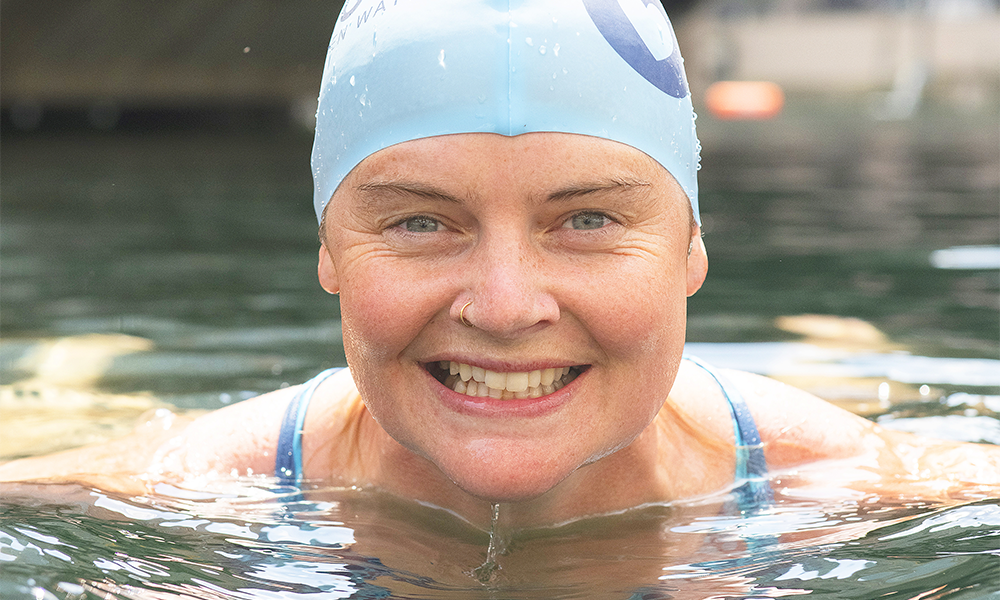
Sessions at Middle Dock cost £8 (or £7 for a pack of 10) for unlimited time in the water. Participants must also be NOWCA members, which costs £15 a year.
Swimmers must wear brightly coloured caps or use a tow float so lifeguards can easily see them. Westsuits are not compulsory but are advised when water temperatures fall below 15ºC.
“Safety is very important to us, but we also hope swimmers will come away feeling that they’ve learnt something that they can use elsewhere at other venues or when they’re on holiday,” said Chess.
“All of our lifeguards are open water trained – this is beyond the level of those looking after indoor pools.
“We’d actually love pool lifeguards who are interested in working with us to come down and see us, because we provide that extra training for a job that’s in the great outdoors local to where they live.
“We’ll also offer a range of courses including a first-time dippers session in a couple of weeks so whether you’re a head-up breast-stroker or a front crawler used to bashing out lengths in the pool, you can come and swim here.
“We can teach you all about sighting, turning round the buoys and swimming in a straight line – which seems to be the thing that eludes people most when they first hit open water.
“I’ll also be doing a front crawl masterclass, where I promise participants that I’ll blow their minds at least five times with the things they’re doing wrong in their stroke.”
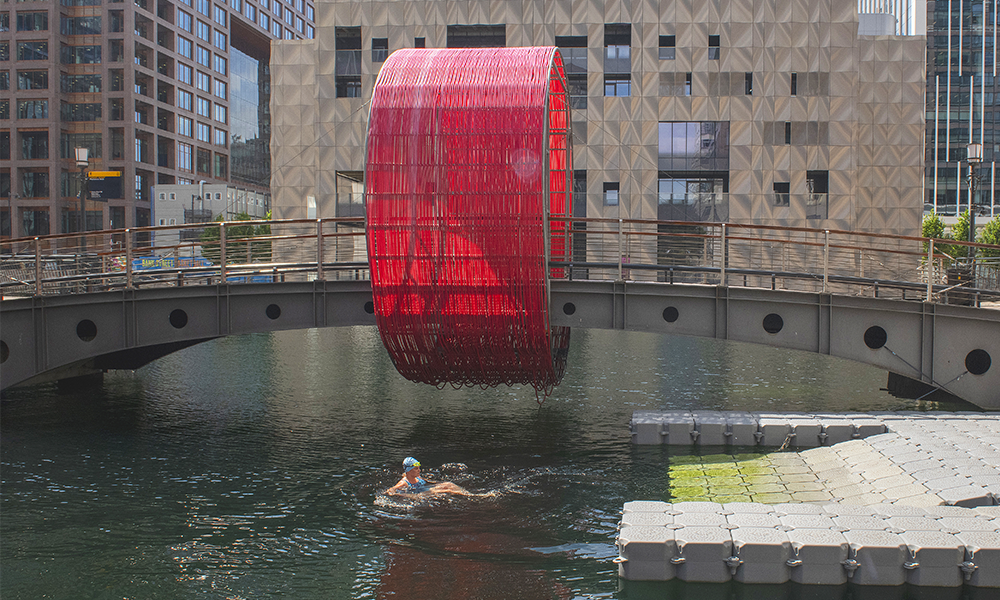
Anyone who lives or works locally will have seen rubbish floating in the docks and knowing that they’re filled from the Thames might make prospective swimmers think twice about taking the plunge.
It’s unrealistic to expect any body of open water to be completely free from floating debris – even outdoor swimming pools have to have filters – but that doesn’t mean the docks aren’t suitable for swimming.
With regular testing in place, the latest results show Middle Dock’s water rates “excellent” under the EU Bathing And Water Regulations 2013.
“The water quality here is absolutely incredible,” said Chess. “We run eight different sites around the UK and assist with 40 others and we have never seen quality this good.
“The Royal Docks are also very clean so we thought it would be good, but you can see down to the bottom and that’s incredibly rare with an industrial open water space like this.
“Rubbish really isn’t a concern in terms of health and I cannot stress that enough. When the tests are done, we look at the general water quality and the two things we’re looking for are e. coli and intestinal enterococci bacteria.
“Under the regulations for e. coli, for example, you can have up to 500 units found in the test water and it’s still considered safe to swim in.
“Here the reading was seven. That’s how exceptionally clean it is.
“That’s why it’s rated at the equivalent of a Blue Flag beach. We even challenge people when they come here. We have three unmarked bottles.
“One is tap water, one is dock water and one is mineral water. You line them up and you just cannot tell the difference.
“The clarity is amazing. Middle Dock is between five and eight metres deep and when you look down you can see absolutely everything.
“However clear you think it’s going to be, times that by 100 and you’ll still be surprised.
“When you look down, there’s old dock infrastructure, bits of pillar, green weed – but nothing that touches you – it’s all at the bottom.
“When you get to the eight-metre bits, all you can see is darkness, like you’re looking into the night sky, with flashes of light reflecting off the bottom – it’s just stunning.
“One of my favourite spots is a place I like to think fish go to sunbathe and meet their future partners.”
Read more: Why Genomics England is moving to Canary Wharf
Read Wharf Life’s e-edition here
Subscribe to Wharf Life’s weekly newsletter here
- Jon Massey is co-founder and editorial director of Wharf Life and writes about a wide range of subjects in Canary Wharf, Docklands and east London - contact via jon.massey@wharf-life.com



